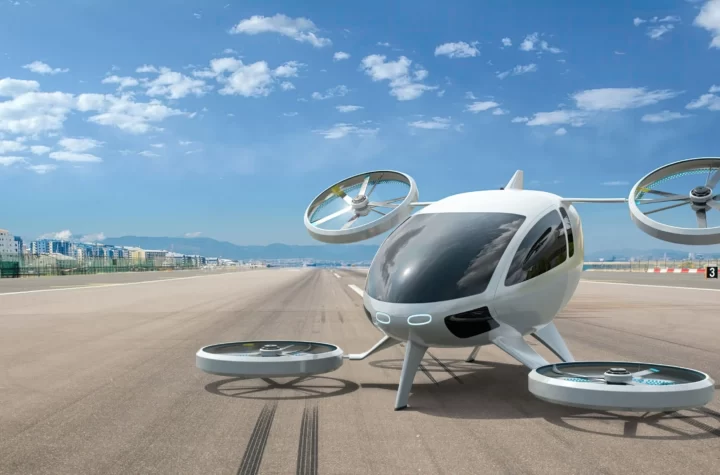In 2010, Ford Motor Company will double the number of models that
offer its advanced radar-based forward collision warning system that
integrates Adaptive Cruise Control and Collision Warning with Brake
Support
— One in four buyers of the 2010 Ford Taurus, Lincoln MKS and Lincoln
MKT have opted for the system, which is designed to alert drivers of
potential collisions
— The next-generation system to be added on the next-generation Ford
Explorer, Ford Edge and Lincoln MKX next year will be programmable for
multiple driver preferences and graphically displayed in a more
user-friendly interface
— Ford’s Blind Spot Information System (BLIS®) with Cross Traffic Alert
also uses radar technology to check the defined blind spot zone and
helps notify the driver of approaching traffic when backing out of a
parking spot
Ford Motor Company will double the availability of its Adaptive Cruise Control and Collision Warning with Brake Support system in 2010 when the advanced, radar-based driver aid and crash avoidance technologies are added to the next-generation Ford Explorer, Ford Edge and Lincoln MKX.
In 2009, Ford began offering Adaptive Cruise Control and Collision Warning with Brake Support on the Ford Taurus, Lincoln MKS and Lincoln MKT. One in four owners of those vehicles opted for these state-of-the-art driver awareness features.
In 2010, the newly enhanced system will allow up to two drivers to program personal settings for both features, including their preferred lead vehicle distance warning times, and a more user-friendly graphical interface.
“We’ve taken a great set of driver awareness features and made them more effective through the use of a more user-friendly interface that’s designed to provide an enhanced driver experience,” said Steve Kozak, Ford’s chief engineer for safety systems.
The radar advantage
More than 70 percent of vehicle accidents occur between two or more moving vehicles, with rear-end accidents accounting for nearly a third of all accidents documented. Most rear-end collisions are due to driver inattention and insufficient driver braking, both of which are addressed by the enhanced brake functionality offered within Ford’s Adaptive Cruise Control and Collision Warning with Brake Support system.
When activated, Adaptive Cruise Control operates just like normal cruise control, with one important exception. If its radar sensor detects slower moving vehicles immediately ahead, the system will reduce the cruising speed as appropriate. When its sensors detect traffic has cleared, the user’s vehicle resumes the set speed. The radar sensor can detect vehicles up to 150 yards away, track their status 20 times per second, and detect speed changes of as little as 1/4 mph.
For 2011, Adaptive Cruise Control will be pictorially represented on a high-tech LCD vehicle instrument display when activated, alongside other driver information such as the fuel gauge and speedometer. The appearance of the information will be similar to the 2010 Ford Fusion’s SmartGauge(TM) cluster, which uses animation of a growing vine to track fuel efficiency. Likewise, Adaptive Cruise Control will be represented by a “bird’s-eye view” of two car icons with distance bars in the gap between them. The distance between the icons is determined by driver-programmable preference.
Also for 2011, Collision Warning with Brake Support, which is packaged with Adaptive Cruise Control as an integrated system, provides the driver with a “heads-up” display of red LEDs that flash on the windshield, and provides an audible alert when its radar senses a reduction in traffic speed in vehicles ahead.
Collision Warning with Brake Support uses the same radar capability as Adaptive Cruise Control and can sense changes in the traffic flow, as low as 1/4 mph. If the driver’s response is delayed, the system will pre-charge the brakes to prepare the vehicle for more aggressive braking to help avoid rear-end accidents. If the driver lifts quickly off of the accelerator indicating a desire to slow down, the system will apply the brakes to a nominal level to begin decelerating the vehicle faster than the driver can move their foot to the brake pedal.
If the driver hits the brakes rapidly, the system will ensure that they are using the full braking capability of the vehicle to avoid or mitigate the potential threat. The feature can detect a change in traffic conditions within 250 milliseconds and provide a warning as quickly as 100 milliseconds later. The system’s activation sensitivity is determined by the driver’s programmable preference.
“We’ve designed the chime and visual alerts to be effective at improving the reaction time from the driver when they’re not paying attention, to get them on to the task at hand, which is applying the brakes if needed,” said Aaron Mills, Ford senior engineer of advanced driver assistance systems.
Another radar-based driver-awareness feature already available on select Ford, Lincoln and Mercury models is Blind Spot Information System (BLIS®) with Cross Traffic Alert, which uses two multiple-beam radar in the rear quarter panels (one per side) for two different – but important – purposes. BLIS checks the defined blind spot zone, which is about 10 feet from the back of the bumper to the outside mirrors. When a vehicle is detected, an amber light in the outside mirror of whichever side that vehicle is on lights up. Cross Traffic Alert notifies the driver of approaching traffic when backing out of a parking spot and warns the driver with a light when a vehicle is detected within three car widths of either side of the vehicle. This is especially useful in crowded parking lots.
“These radar-based systems build on Ford’s leading safety heritage,” said Jeff Rupp, manager, Active Safety, Research and Advanced Engineering at Ford’s Research and Innovation Center. “Many years of research and engineering work, leveraging experience gained in aerospace and other non-automotive applications, have enabled Ford to offer these crash avoidance and driver awareness systems on a growing number of vehicles. As a result, vehicle occupants may be better protected than ever before.”














































 Heavy-Duty Diesel Engine Production in China
Heavy-Duty Diesel Engine Production in China


